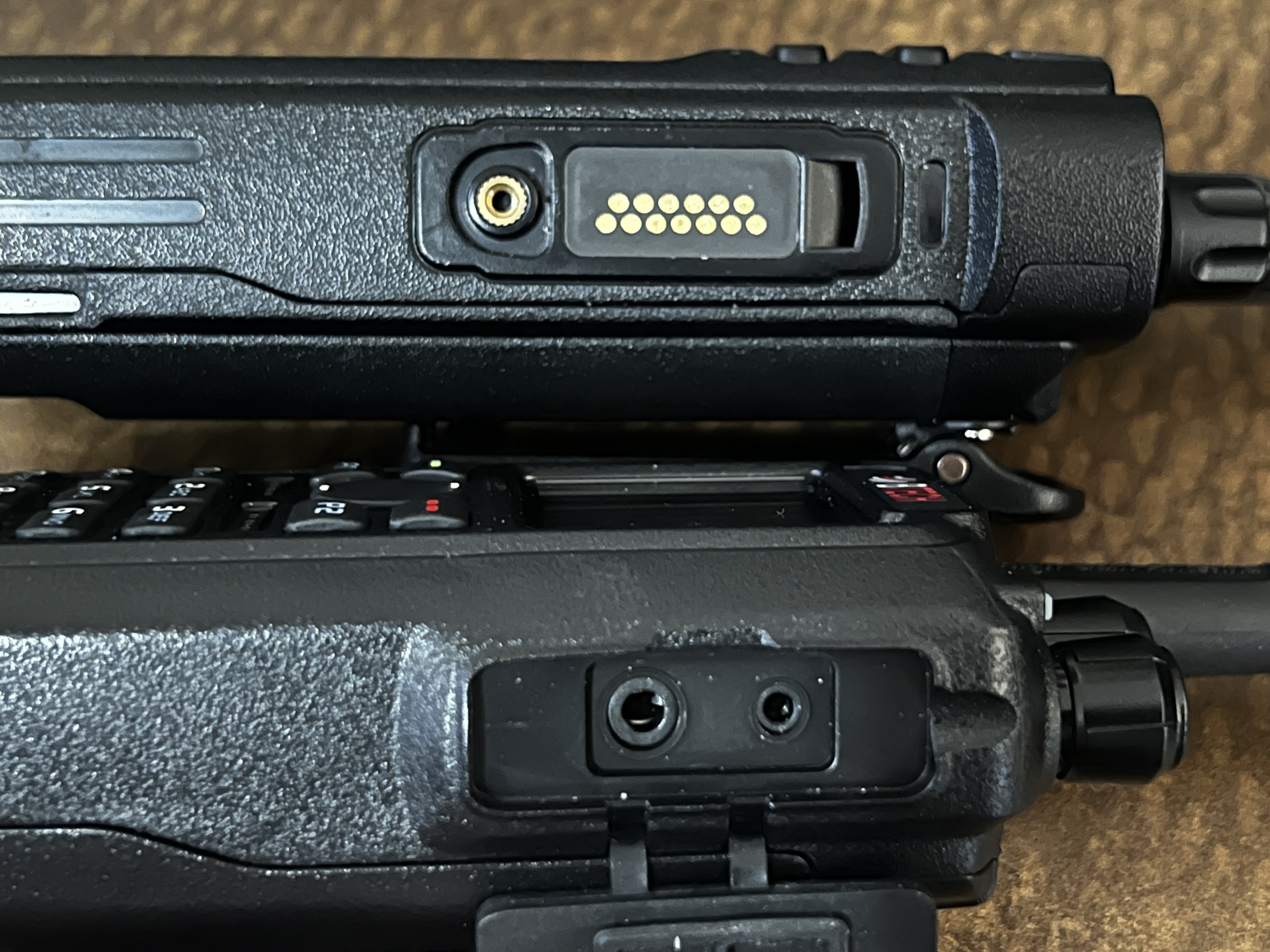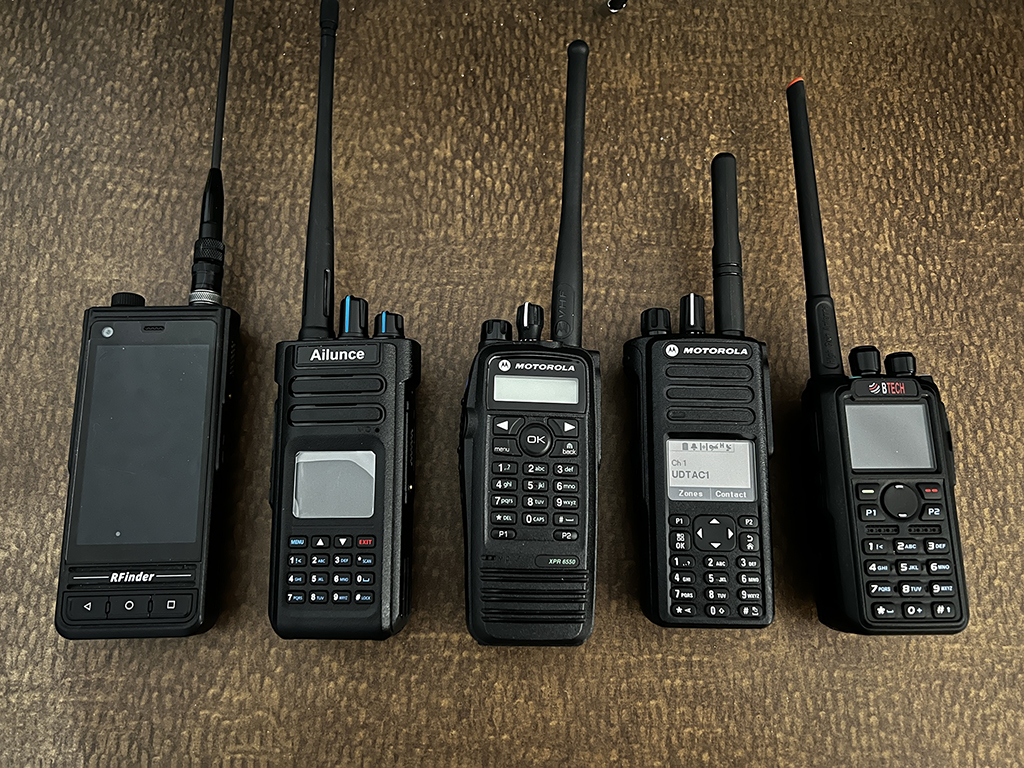When it comes to amateur radio, we want to reach as many people as possible as easy as possible. We want to turn our radios on no matter if it is Analog or Digital and we want to be able to tune the frequency we want, PL tones we want, etc. and make that contact. Most radios built today from the likes of ICOM, Yaesu, Kenwood, Baofeng, and so on are build with ease of use and features to really get on the air and communicate.
Went it comes to SHTF however; you really want the opposite. First, To get the legal stuff out of the way this post is only to spark discussion and not to encourage or show how to break the law. The FCC does not allow encryption, scrambling, inversion, etc. for FRS, MURS, GMRS, and Amateur Radio. This concept is to only demonstrate (without transmitting) on why DMR with Encryption is better than off the shelf amateur radios when it comes specifically to SHTF scenarios.
So why DMR?
Now that we have that out of the way. So why is DMR better? Well to understand that you need to understand how other “digital” radio services work. Yaesu System Fusion and DSTAR with ICOM and Kenwood, use proprietary systems to make the digital talkspace function. When you setup a node such as a Pi-Star, you connect to the internet and when you transmit the data is sent first to servers hosting the backbone of the service then the transmission is sent out to other repeaters connected to the same “talkgroup” so everyone can hear you. Now, your probably saying, well yes all systems Fusion, DSTAR and DMR do this to be able to communicate around the world and you are correct, but, what happens when the world goes to hell and there is no more internet?
Well you can run a standalone Fusion or DSTAR repeater so you have comms, but how do you secure it when you do not want others to listen when your coordinating movements and protecting items in a SHTF scenario? Sure you can use a random frequency but then what? A quick scan on any DSTAR or Fusion radio will pick you up quickly.
This is where DMR shines. DMR or Digital Mobile Radio, was designed not with amateur radio in mind but instead business that want to protect intellectual property and keep communication private. Because of this the FCC allows encryption for business users with a business license, but when SHTF there are no more laws thus you can use encryption on the air waves to give yourself operational security. Pair this with color codes and time slots and you can see how DMR can be useful to hide your communications.
Now there are some caveats to this, one major is that most manufacturers do not make radios with AES encryption. There are a few like the BTECH DMR-6X2 Pro and some second hand Motorola radios.

Second, is if the radio supports Basic or Enhanced encryption such as most DMR radios out today like the Ailunce HD-1 GPS or the TYT MD-UV390 will not be able to communicate together, their encryption is only compatible with the same model/vendor type radios as there is no standard since encryption is illegal in the United States. So this means that unless your radio supports AES-256 standard you need to have the same radio to encrypt between for the most part. When it comes to the ability to crack, any of the basic or enhanced (40-bit key) encryption methods can be cracked with time and tools but for SHTF for personal security it would work perfect.
So what radio did I choose?
So now you want to get a DMR radio but what to choose? Well when I went to make my decision I had a list of requirements that were to suit my needs. Your needs may vary.
- Be readily available (not only on used market)
- It has to be at least IP67 rated for dust and water protection.
- It has to be cost effective, not $2K Motorola devices.
- Had to support some type of encryption/inversion/scrambling feature
- Had to have accessories that were also IP67 and above and have several mic options (hand, earmic, etc.)
The three radios I chose in the end to do a head to head (only 2 offered IP67 unfortunately) were the BTECH DMR-6X2 Pro, The TYT MDUV-390 and the Ailunce HD1 GPS. All three of them are current models and readily available on Amazon, Online Retailers, etc. They all are true DMR Tier II radios which support two timeslots. They are all under $200 and not only available on a used market where you need a separate subscription for a CPS like Motorola radios. They all feature a form of encryption and all have readily available accessories. Now the downside to the BTECH DMR-6X2 Pro is that it is not IP67 but only IP54 which is a shame. BTECH please give us a version with IP67 like the HD1 does it. The Ailunce HD1 GP and the TYT MD-UV390 both offer IP67 water resistance which is 1 meter of water for 30 minutes. For SHTF you really never know what environment you will cross so this is a must. While the BTECH offers AES-256 encryption because of the lack of water protection I had to remove it from the running.
Now down to the HD1 and the TYT MD-UV390, which all fit the bill of what I was looking for, well at first sight. There were two major issues with the TYT MD-UV390 that made me return it. First, the contact database is small so if you want to use it for both SHTF and Amateur use, you need to be careful about how many contacts you import. Finally, and the most important for me was the IP67 features. Yup, that’s right I was upset about it’s waterproofing but really the issue was with the accessory port. If you look below there are two types of accessory port connectors that most radios use. One is a pin design like the BTECH uses which is a K1 plug with two pins inserted into the radio. The second is a contact pin design which maintains the IP rating ensuring that you can use the accessory while maintaining the radios integrity.

As you can see above the HD1 has the contact style plug but the TYT and the BTECH both have the K1 pin style design. BTECH claims IP54 which fits the design, the TYT is also I67 but only up until you remove the cover and gasket from the accessory port. Then it is exposed as the BTECH is above so you cannot use any of your K1 accessories, mics, etc. while maintaining the IP67 rating. This was a big downside for me as to be IP67 I should not have to choose between using accessories or not.
So the winner was and still is for me today the Ailunce HD1 GPS when it comes to my SHTF radios. I have several with waterproof mics, earbuds, etc. and they all work together with the same codeplug and encryption.

I hope you found this post informative and if you do please feel free to leave a comment and browse some of our other posts and our social media.
